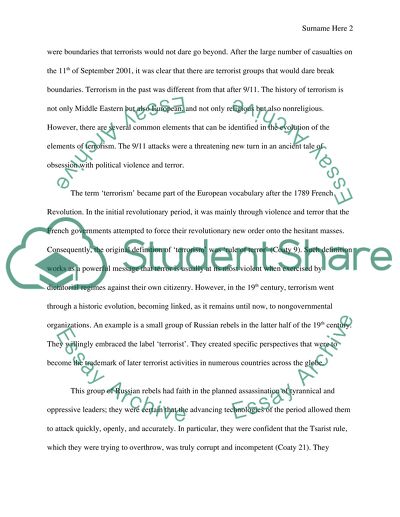Cite this document
(“The Evolution of Terrorism Essay Example | Topics and Well Written Essays - 1250 words”, n.d.)
Retrieved from https://studentshare.org/social-science/1668343-understanding-the-war-on-terror
Retrieved from https://studentshare.org/social-science/1668343-understanding-the-war-on-terror
(The Evolution of Terrorism Essay Example | Topics and Well Written Essays - 1250 Words)
https://studentshare.org/social-science/1668343-understanding-the-war-on-terror.
https://studentshare.org/social-science/1668343-understanding-the-war-on-terror.
“The Evolution of Terrorism Essay Example | Topics and Well Written Essays - 1250 Words”, n.d. https://studentshare.org/social-science/1668343-understanding-the-war-on-terror.


